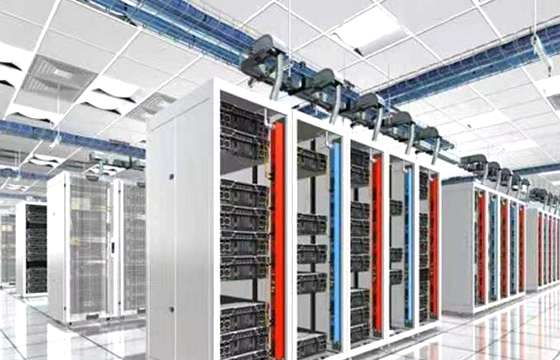

Introduction
In data center design, maintaining optimal environmental conditions is crucial for ensuring the reliability and efficiency of IT equipment. One key parameter in this context is the dry bulb temperature (DBT), which represents the air temperature measured by a standard thermometer. This parameter plays a significant role in the overall thermal management of a data center.
Elevated floor helps data centers manage dry bulb temperature, the data center adopts a cold aisle closure method and a raised access floor air supply and return method. The cold air cooled by the air conditioner enters the cold zone through the elevated floor, flows through the equipment to form hot air, and is discharged into the hot zone at the back of the cabinet. Then, it returns to the air conditioning equipment through the return air outlet at the air conditioning partition wall, separating the cold and hot air in the entire computer room area, improving the utilization rate of cold air in the dedicated air conditioning system, and further enhancing the cooling effect.

Importance of Dry Bulb Temperature
1. Equipment Performance: Most IT equipment has specified operating temperature ranges. Keeping the dry bulb temperature within these ranges is essential to prevent overheating, which can lead to hardware failure and decreased performance.
2. Energy Efficiency: The dry bulb temperature impacts the cooling load of the data center. Higher temperatures can reduce the efficiency of cooling systems, leading to increased energy consumption.
3. Humidity Control: While DBT measures air temperature, it is closely related to relative humidity. Maintaining appropriate humidity levels is critical for preventing static electricity, corrosion, and other issues that can arise from high or low humidity.
Recommended Dry Bulb Temperature Ranges
- Telecommunications Equipment: Typically, a DBT range of 18°C to 27°C (64°F to 81°F) is recommended for optimal performance.
- Server Equipment: The American Society of Heating, Refrigerating and Air-Conditioning Engineers (ASHRAE) recommends a wider range of 18°C to 27°C (64°F to 81°F) for data centers, with an optimal range often cited as 20°C to 24°C (68°F to 75°F).
- Efficiency Considerations: For energy efficiency, some data centers operate at higher temperatures, around 27°C to 30°C (81°F to 86°F), provided that humidity is controlled and equipment manufacturer specifications are met.
Factors Influencing Dry Bulb Temperature
1. Cooling System Design: The type and configuration of cooling systems (e.g., CRAC units, chilled beams, or in-row cooling) directly influence the DBT achieved within the data center.
2. Heat Load: The amount of heat generated by IT equipment determines the cooling requirements. As the heat load increases, maintaining an optimal DBT becomes more challenging.
3. Airflow Management: Effective airflow management, including the use of hot aisle/cold aisle configurations, helps optimize temperature distribution and maintain the desired DBT.
4. External Conditions: Ambient temperature and humidity levels outside the data center can impact the efficiency of cooling systems, thereby affecting the internal DBT.
Monitoring and Control
- Temperature Sensors: Continuous monitoring of dry bulb temperature is crucial. Sensors should be strategically placed throughout the data center to provide accurate readings.
- Building Management Systems (BMS): Implementing a BMS allows for real-time monitoring and automated adjustments to cooling systems based on DBT readings.
- Alerts and Alarms: Setting thresholds for DBT can trigger alerts to facility managers if temperatures exceed optimal levels, allowing for prompt corrective actions.
Conclusion
The dry bulb temperature is a critical parameter in designing and operating data centers. By maintaining DBT within recommended ranges, data center operators can ensure the reliability of IT equipment, enhance energy efficiency, and create a stable environment for sensitive operations. Proper monitoring and control of DBT, combined with effective cooling strategies, are vital for the overall success of data center management.